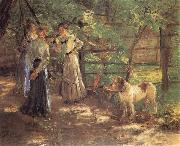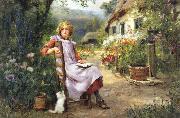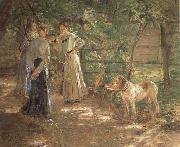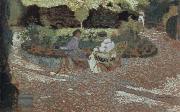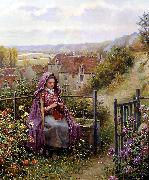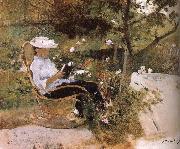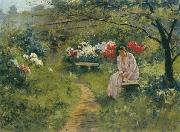Wholesale Oil Painting No Minimum |
|||||||||||
|
|
|||||||||||

|
|||||||||||
|
|
|
||||||||
Jean-Franc MilletFrench Realist Painter, 1814-1875 |
||||||||
|
|
||||||||
In the garden
In the garden Painting ID:: 10564 |
1862Watercolour
12.5 x 14.4 inches 1862Watercolour 12.5 x 14.4 inches |
|||||||
|
|
||||||||
Fritz von UhdeGerman, 1848-1911 was a German painter of genre and religious subjects. His style lay between Realism and .Uhde was born in Wolkenburg, Saxony. In 1866 he was admitted to the Academy of Fine Arts in Dresden, but later that year he left his studies for military service, and from 1867 to 1877 he was a professor of horsemanship to the regiment of the assembled guard. He moved to Munich in 1877 to attend the Academy of Fine Arts. In Munich he particularly admired the Dutch old masters, and in 1879 he travelled to Paris where his studies of the Dutch painters continued under Mihely Munkecsy's supervision. In 1882 a journey to Holland brought about a change in his style, as he abandoned the dark chiaroscuro he had learned in Munich in favor of a colorism informed by the works of the French Impressionists. His work was often rejected by the official art criticism, and by the public, because his representations of ordinary scenes were considered vulagar or ugly. The critic Otto Julius Bierbaum was more sympathetic; in 1893, he wrote, "As a painter of children, for example, Uhde is extraordinarily distinguished. He does not depict them as sweetly as used to be popular; in other words not as amusing or charming dolls, but with extreme, very strict naturalness." In about 1890, Uhde became a professor at the Academy of Fine Arts in Munich. |
||||||||
|
|
||||||||
|
|
In the Garden
In the Garden Painting ID:: 34026 |
mk87
1906
Oil on canvas
70x100cm
Mannheim,Stadtische Kunsthalle Mannheim
mk87 1906 Oil on canvas 70x100cm Mannheim,Stadtische Kunsthalle Mannheim |
||||||
|
|
||||||||
Henry John Yeend Kingan important Victorian genre and landscape artist . English,1855-1924 |
||||||||
|
|
||||||||
|
|
In the Garden
In the Garden Painting ID:: 34749 |
|
||||||
|
|
||||||||
Fritz von UhdeGerman, 1848-1911 was a German painter of genre and religious subjects. His style lay between Realism and .Uhde was born in Wolkenburg, Saxony. In 1866 he was admitted to the Academy of Fine Arts in Dresden, but later that year he left his studies for military service, and from 1867 to 1877 he was a professor of horsemanship to the regiment of the assembled guard. He moved to Munich in 1877 to attend the Academy of Fine Arts. In Munich he particularly admired the Dutch old masters, and in 1879 he travelled to Paris where his studies of the Dutch painters continued under Mihely Munkecsy's supervision. In 1882 a journey to Holland brought about a change in his style, as he abandoned the dark chiaroscuro he had learned in Munich in favor of a colorism informed by the works of the French Impressionists. His work was often rejected by the official art criticism, and by the public, because his representations of ordinary scenes were considered vulagar or ugly. The critic Otto Julius Bierbaum was more sympathetic; in 1893, he wrote, "As a painter of children, for example, Uhde is extraordinarily distinguished. He does not depict them as sweetly as used to be popular; in other words not as amusing or charming dolls, but with extreme, very strict naturalness." In about 1890, Uhde became a professor at the Academy of Fine Arts in Munich. |
||||||||
|
|
||||||||
|
|
In the Garden
In the Garden Painting ID:: 54325 |
mk235
1906
Oil on canvas
70x100cm
mk235 1906 Oil on canvas 70x100cm |
||||||
|
|
||||||||
Edouard Vuillard1868-1940 French Edouard Vuillard Galleries Jean-Edouard Vuillard, the son of a retired captain, spent his youth at Cuiseaux (Saone-et-Loire); in 1878 his family moved to Paris in modest circumstances. After his father\'s death, in 1884, Vuillard received a scholarship to continue his education. In the Lycee Condorcet Vuillard met Ker Xavier Roussel (also a future painter and Vuillard\'s future brother in law), Maurice Denis, musician Pierre Hermant, writer Pierre Veber and Lugne-Poe. On Roussel\'s advice he refused a military career and entered the Ecole des Beaux-Arts, where he met Pierre Bonnard. In 1885, Vuillard left the Lycee Condorcet and joined his closest friend Roussel at the studio of painter Diogene Maillart. There, Roussel and Vuillard received the rudiments of artistic training. |
||||||||
|
|
||||||||
|
|
in the garden
in the garden Painting ID:: 56360 |
mk247
1894 to 95,oil on canvas,20x32.5 in,51x83 cm,pushkin museum of fine arts,moscow,russia mk247 1894 to 95,oil on canvas,20x32.5 in,51x83 cm,pushkin museum of fine arts,moscow,russia |
||||||
|
|
||||||||
Daniel Ridgeway Knight1839-1924 Daniel Ridgeway Knight Gallery Daniel Ridgway Knight was born on March 15,1839 in Pennsylvania. He studied and exhibited at the Pennsylvania Academy of the Fine Arts, were he was a classmate of Mary Cassatt and Thomas Eakins. In 1861, he went to Paris to study at L'Ecole des Beaux-Arts under Cabanel, and to apprentice in the atelier of Charles-Gabriel-Gleyere. |
||||||||
|
|
||||||||
|
|
In the Garden
In the Garden Painting ID:: 57513 |
oil painting on canvas oil painting on canvas |
||||||
|
|
||||||||
Joaquin SorollaSpanish Realist/Impressionist Painter, 1863-1923 |
||||||||
|
|
||||||||
|
|
In the garden
In the garden Painting ID:: 61688 |
mk275 1896 Oil on canvas 37 x 48 cm private possession mk275 1896 Oil on canvas 37 x 48 cm private possession |
||||||
|
|
||||||||
Sergey Ivanovich Svetoslavskypainted In the Garden in 1900s |
||||||||
|
|
||||||||
|
|
In the Garden
In the Garden Painting ID:: 87504 |
Date 1900s
Medium Oil on canvas
cjr Date 1900s Medium Oil on canvas cjr |
||||||
|
|
||||||||
Sergey Ivanovich Svetoslavskypainted In the Garden in 1900s |
||||||||
|
|
||||||||
|
|
In the Garden
In the Garden Painting ID:: 92255 |
1900s
Medium oil on canvas
cyf 1900s Medium oil on canvas cyf |
||||||
|
|
||||||||
|
Sergey Ivanovich Svetoslavsky painted In the Garden in 1900s In the Garden 1900s Medium oil on canvas cyf |
||||||||
|
|
||||||||
|
Prev Next
|
||||||||
|
|
||||||||
|
Related Paintings to Sergey Ivanovich Svetoslavsky :. |
||||||||
|
|
||||||||
|
CONTACT US |


